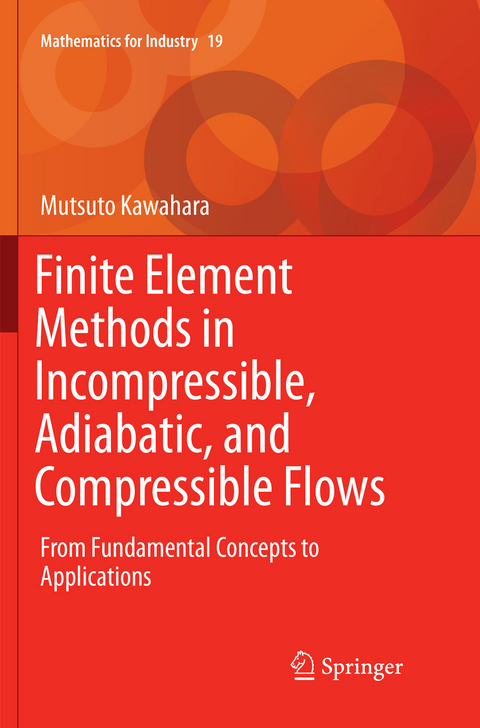
Finite Element Methods in Incompressible, Adiabatic, and Compressible Flows
From Fundamental Concepts to Applications
Seiten
2018
|
Softcover reprint of the original 1st ed. 2016
Springer Verlag, Japan
9784431566571 (ISBN)
Springer Verlag, Japan
9784431566571 (ISBN)
This book focuses on the finite element method influid flows. Precise concepts of the finiteelement method remitted in the field of analysis of fluid flow are stated,starting with spring structures, which are most suitable to show the conceptsof superposition/assembling.
This book focuses on the finite element method in
fluid flows. It is targeted at researchers, from those just starting out up to
practitioners with some experience. Part I is devoted to the beginners who are
already familiar with elementary calculus. Precise concepts of the finite
element method remitted in the field of analysis of fluid flow are stated,
starting with spring structures, which are most suitable to show the concepts
of superposition/assembling. Pipeline system and potential flow sections show
the linear problem. The advection–diffusion section presents the time-dependent
problem; mixed interpolation is explained using creeping flows, and elementary
computer programs by FORTRAN are included. Part II provides information on recent
computational methods and their applications to practical problems. Theories of
Streamline-Upwind/Petrov–Galerkin (SUPG) formulation, characteristic
formulation, and Arbitrary Lagrangian–Eulerian (ALE) formulation and others are
presented with practical results solved by those methods.
This book focuses on the finite element method in
fluid flows. It is targeted at researchers, from those just starting out up to
practitioners with some experience. Part I is devoted to the beginners who are
already familiar with elementary calculus. Precise concepts of the finite
element method remitted in the field of analysis of fluid flow are stated,
starting with spring structures, which are most suitable to show the concepts
of superposition/assembling. Pipeline system and potential flow sections show
the linear problem. The advection–diffusion section presents the time-dependent
problem; mixed interpolation is explained using creeping flows, and elementary
computer programs by FORTRAN are included. Part II provides information on recent
computational methods and their applications to practical problems. Theories of
Streamline-Upwind/Petrov–Galerkin (SUPG) formulation, characteristic
formulation, and Arbitrary Lagrangian–Eulerian (ALE) formulation and others are
presented with practical results solved by those methods.
Introduction.- Part I Introduction to Finite Element Methods in Fluid Flows.- Basic Concepts of Finite Element Method.- Pipeline systems.- Potential Flow.- Advection-diffusion.- Creeping Flow.- Part II Computational methods and applications of Finite Element Method in Fluid Flows.- Continuum Mechanics of Fluid Flows.- Analysis of Incompressible Flows.- Analysis of Adiabatic Flows.- Analysis of Compressible Flows.- ALE Formulation.- References.- Index
| Erscheinungsdatum | 20.07.2018 |
|---|---|
| Reihe/Serie | Mathematics for Industry ; 19 |
| Zusatzinfo | 99 Illustrations, color; 20 Illustrations, black and white |
| Verlagsort | Tokyo |
| Sprache | englisch |
| Maße | 155 x 235 mm |
| Themenwelt | Mathematik / Informatik ► Mathematik ► Allgemeines / Lexika |
| Mathematik / Informatik ► Mathematik ► Analysis | |
| Naturwissenschaften ► Physik / Astronomie ► Mechanik | |
| Naturwissenschaften ► Physik / Astronomie ► Strömungsmechanik | |
| Technik ► Maschinenbau | |
| ISBN-13 | 9784431566571 / 9784431566571 |
| Zustand | Neuware |
| Informationen gemäß Produktsicherheitsverordnung (GPSR) | |
| Haben Sie eine Frage zum Produkt? |
Mehr entdecken
aus dem Bereich
aus dem Bereich
ein Übungsbuch für Fachhochschulen
Buch | Hardcover (2023)
Carl Hanser (Verlag)
CHF 23,75


